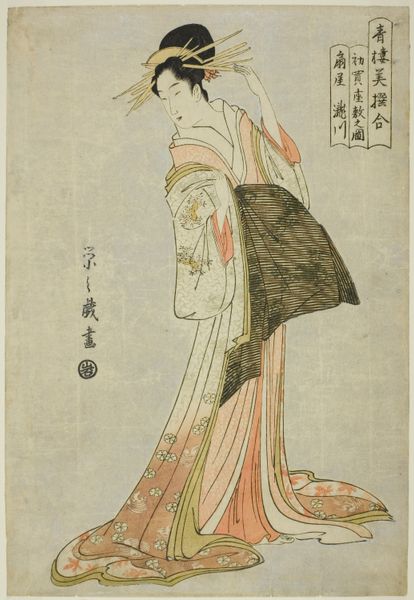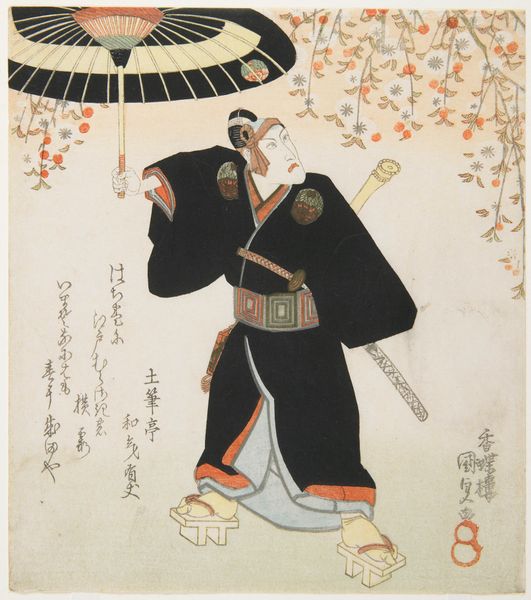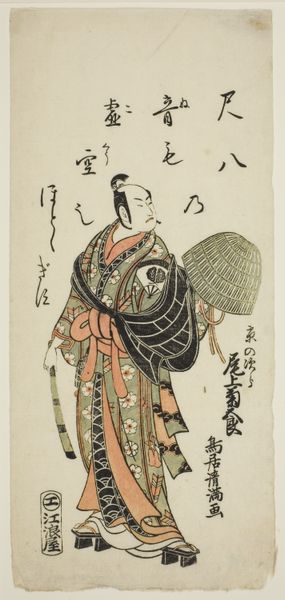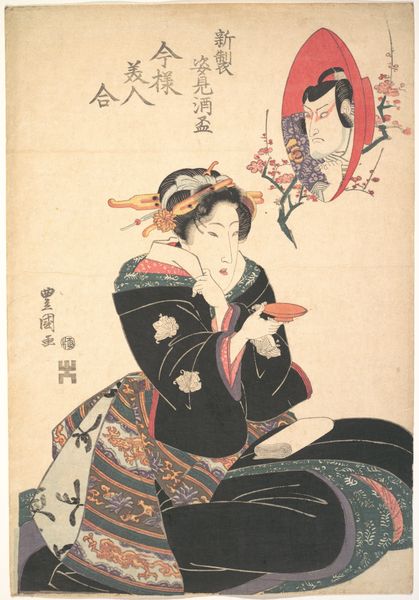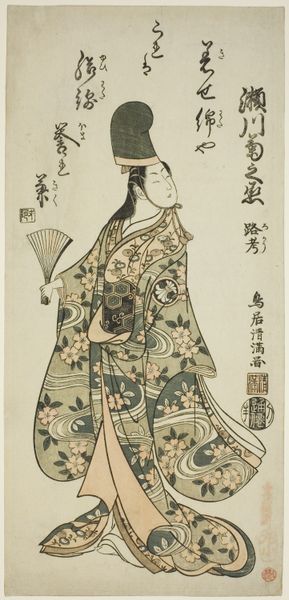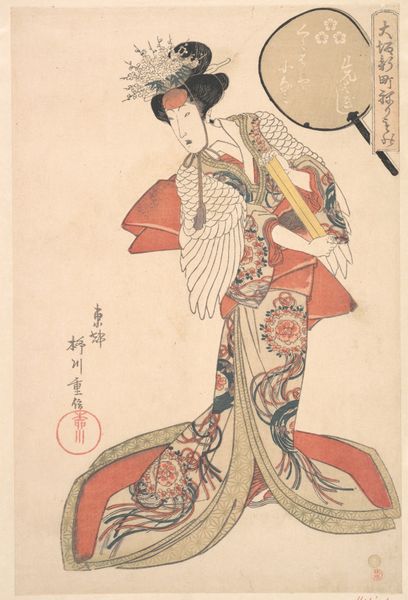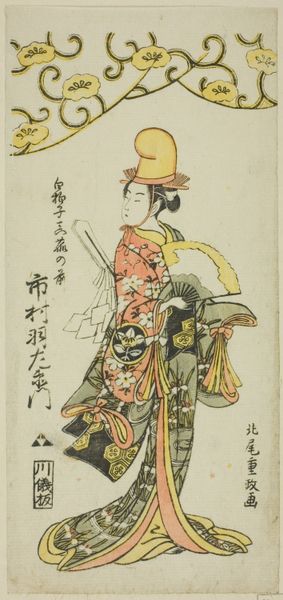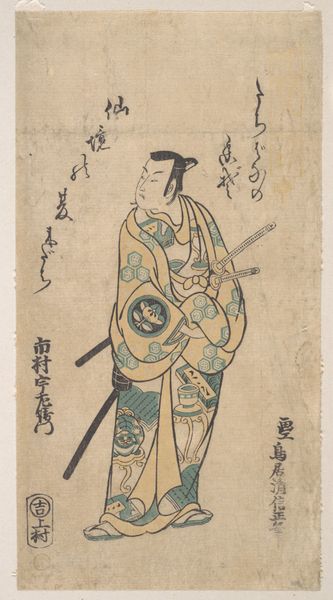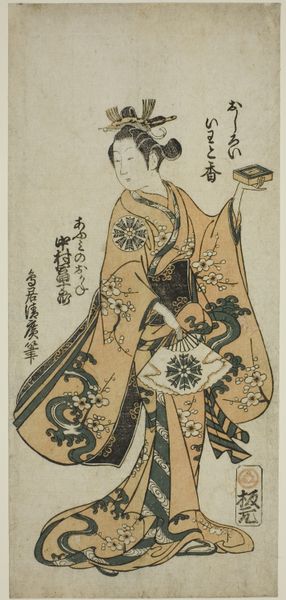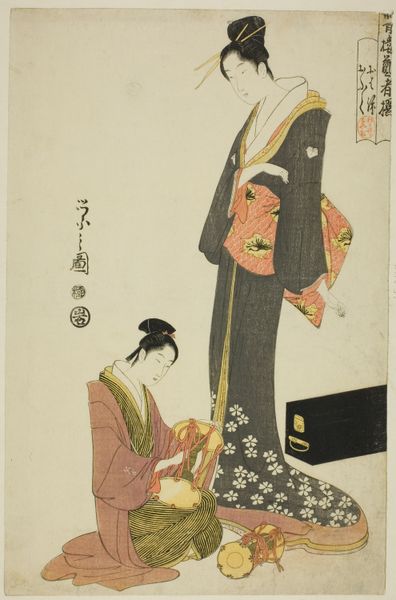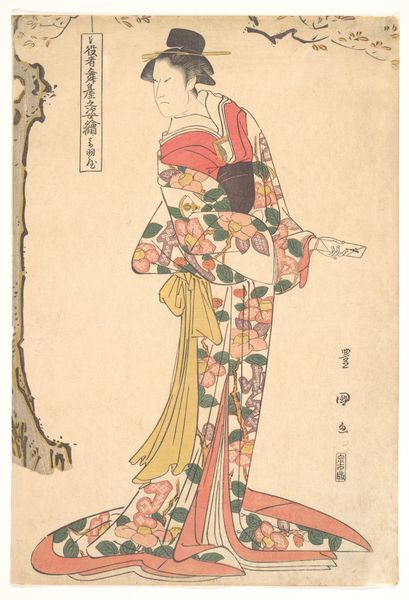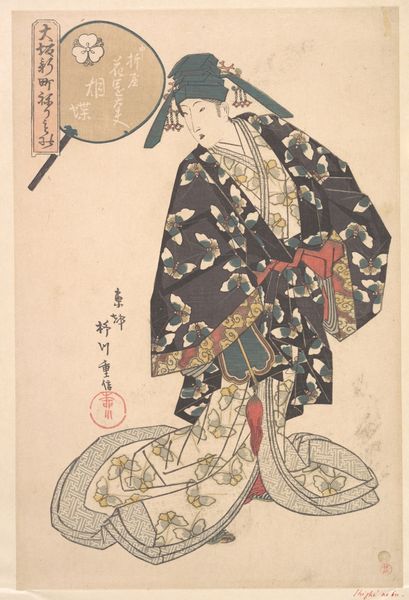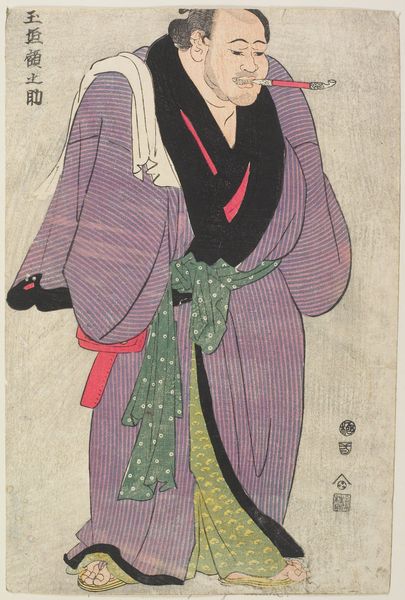
print, paper, ink, woodblock-print
#
portrait
#
narrative-art
# print
#
ukiyo-e
#
japan
#
figuration
#
paper
#
ink
#
woodblock-print
Dimensions: 20 9/16 × 9 3/16 in. (52.3 × 23.3 cm) (image, sheet, nagaban)
Copyright: Public Domain
Editor: So, this is "Masako from Mino Province," a woodblock print by Kitagawa Utamaro, dating back to around 1804. What strikes me is the intimate portrayal of motherhood, but I wonder how this image was received within the social context of Edo-period Japan? What do you see when you look at this piece? Curator: I see a complex interplay of social status, gender expectations, and the commercial art market. Masako, likely a courtesan, is depicted not just as an object of desire but also in her role as a mother. This image challenges rigid social categorizations. How might this depiction of motherhood intersect with, or perhaps subvert, contemporary ideals of femininity? Editor: That's fascinating. I hadn’t considered how it might blur those rigid social lines. Is the presence of the other kneeling woman significant? Curator: Absolutely. The kneeling figure, gazing upwards, positions Masako as an object of admiration, reinforcing her social standing within this intimate domestic scene, while reminding us of the class distinctions inherent in this society. But is this admiration genuine or is it performance? How does that question resonate with contemporary discussions around female representation and the male gaze? Editor: It does make me think about the ways women are represented, both then and now. There's almost a sense of... curated performance. It seems relevant to today’s performative feminism too. Curator: Precisely! And let’s not overlook the role of the ukiyo-e tradition itself. These prints were mass-produced for a burgeoning merchant class. How does the commercial nature of the artwork complicate our understanding of its representation of women and motherhood? Was this challenging social commentary or commercially viable voyeurism? Editor: It definitely complicates things, seeing it as part of this commercial system changes the dynamic. Thanks, this gave me a new perspective on this piece. Curator: Indeed. It underscores the importance of engaging with art beyond aesthetics, interrogating the societal structures that shaped its creation and reception, and to keep asking hard questions about ourselves.
Comments
minneapolisinstituteofart almost 2 years ago
⋮
Executed in the rare, long format (nagaban), this print depicts a prostitute and her attendant playing with a child who could be hers from a previous love affair. The poem reads: I rub evening primrose flower on the cloth of the man I love, hoping the scent of the flower will remind him of me The name of the prostitute is inscribed on the print as “Masako from Mino Province,” which we can use to identify Yabe Masako, who died at age twenty-nine in 1773.
Join the conversation
Join millions of artists and users on Artera today and experience the ultimate creative platform.
